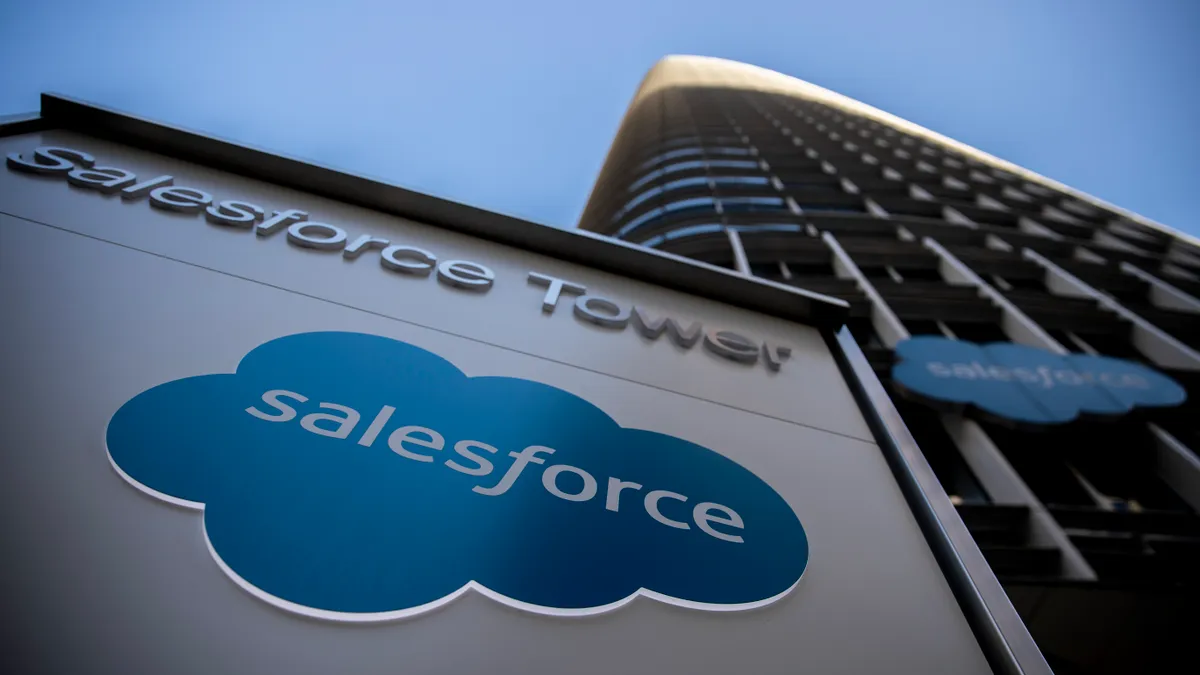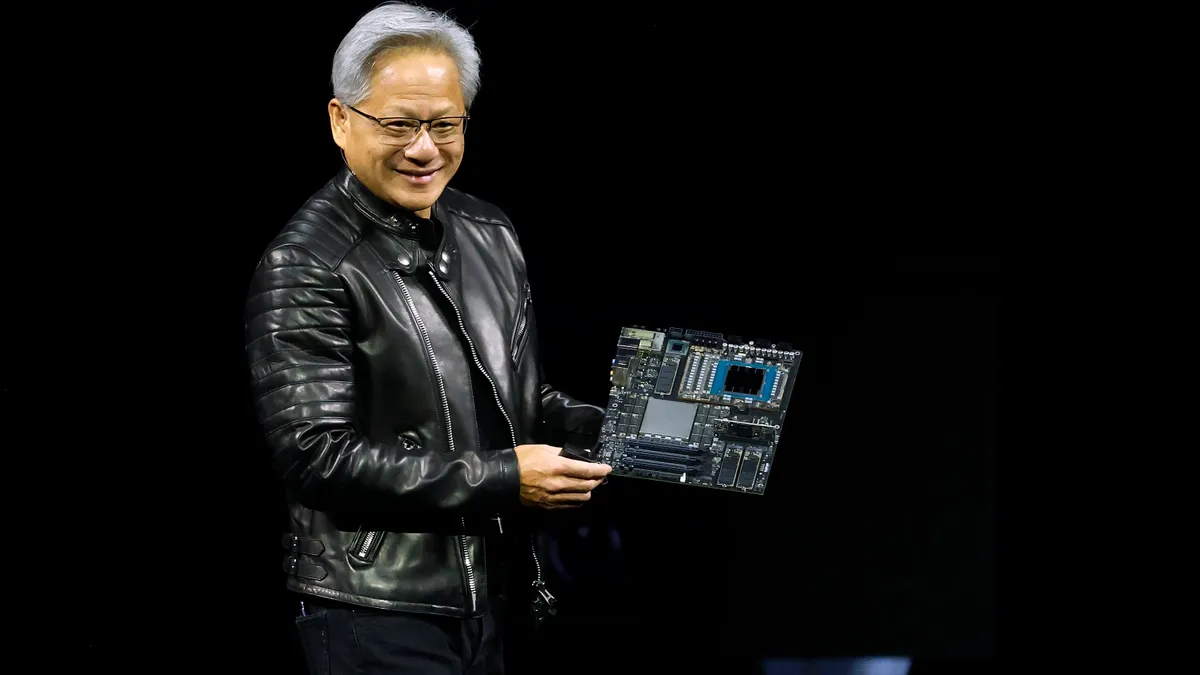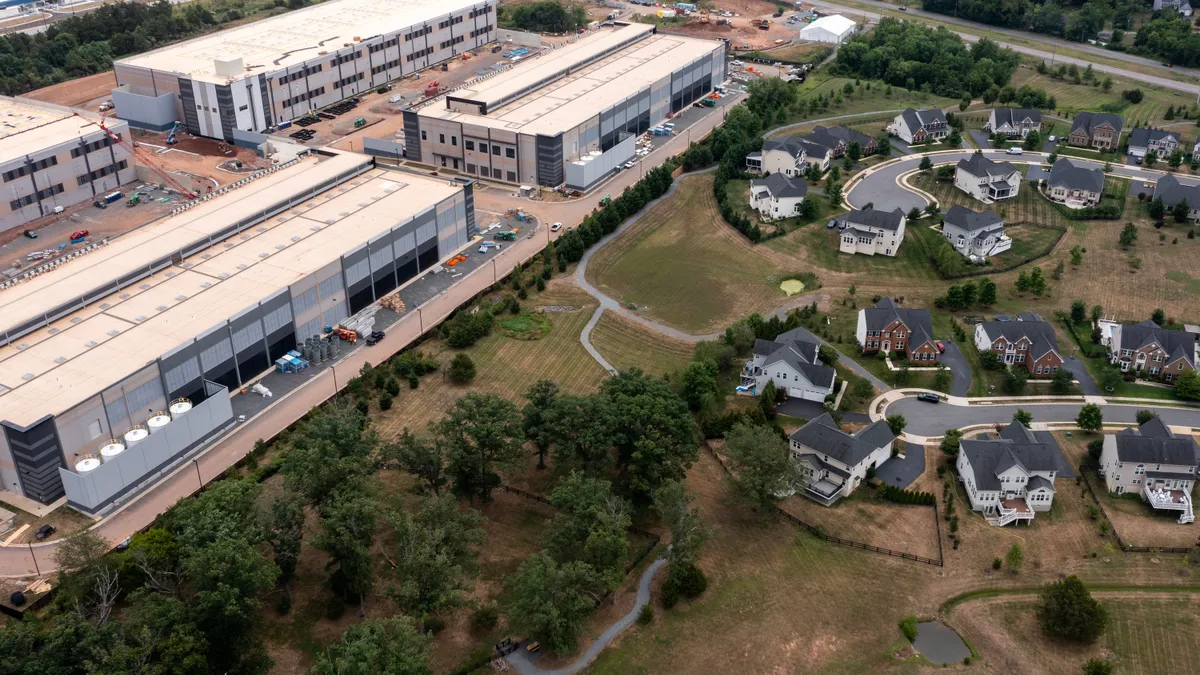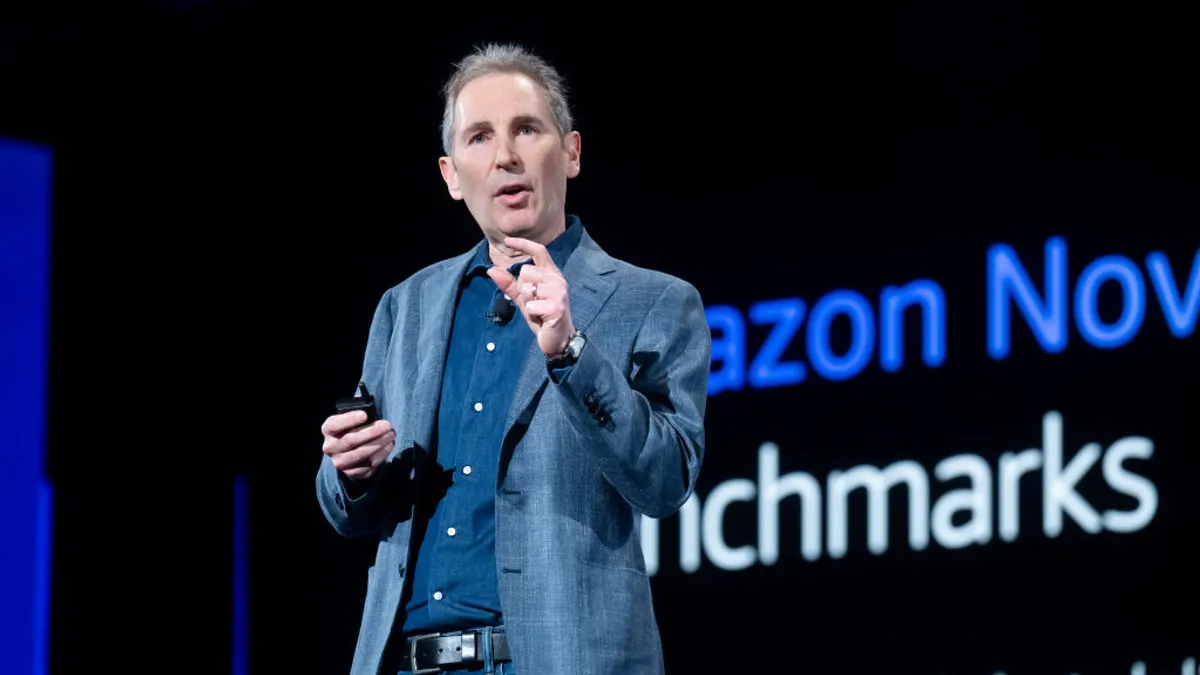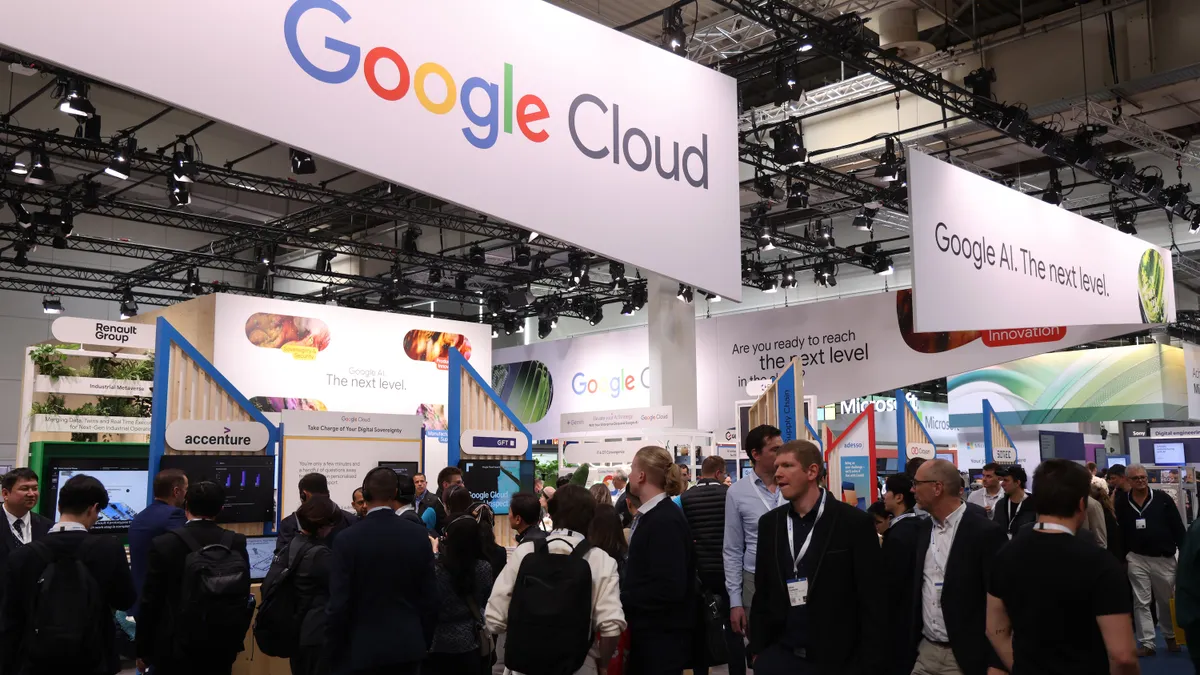Technology leaders entered 2025 with agentic AI on their to-do lists. Enterprises have high hopes for the technology, and some are positioning their business to adopt AI agents in the coming year.
“In today’s world, without agentic AI, no AI conversation is complete,” Arnab Chakraborty, chief responsible AI officer at Accenture, told CIO Dive. The shift to focus on agents, which extends to academia, vendors and their customers, is pronounced.
Research papers on agentic systems increased exponentially between 2022 and 2024, according to Accenture analysis. Plus, Forrester found around 400 vendors offering new agent platforms during its market analysis.
Some analysts expect organizations to quickly reap value from agents given the resources poured into strengthening governance and modernizing processes for generative AI. Other experts have raised security concerns, pointing to readiness gaps and immature foundations as pivotal adoption roadblocks. The consensus: success isn’t guaranteed.
“Even though it might be overhyped in the first year, we’re going to be seeing some interesting results this year and also probably some epic failures,” said Vladimir Lukic, global leader of Boston Consulting Group's Technology and Digital Advantage.
Enterprises have struggled to realize generative AI’s promises. Just one-quarter of executives see significant value from their AI efforts, according to BCG data. Disillusionment will impede progress toward agentic AI adoption, analysts expect.
Despite readiness gaps and varied levels of prior success, enterprise enthusiasm for AI agents exists. Two-thirds of organizations are exploring the use of AI agents already, BCG research found.
Household appliance maker SharkNinja is among the organizations jumping on board. The DTC retailer is piloting agents via Salesforce’s Agentforce as part of a broader re-platforming project.
“We’ve been doing a lot of work over the last year … as we were getting ready for this much larger program,” SharkNinja CIO Velia Carboni said. “It’s actually a great marriage between some of the work we’re doing because they all need that same foundational layer of knowledge and data about the products and consumers.”
SharkNinja plans to scale agent use later this year. The rollout will focus on several key use cases: troubleshooting customer issues and product questions, managing returns and guiding customers through the buying process.
For now, the company is still focused on setting the entire business up for success.
“This is a massive overhaul for us, and it’s not a technology project at all,” Carboni said.
What’s driving adoption?
Technology vendors attracted a monsoon of generative AI users for their initial offerings. The strategy relied on building hype, mitigating roadblocks, expanding access and increasing familiarity with the technology. Providers hope the same tactics lead to a similar adoption boom for AI agents.
Microsoft added a slew of capabilities last year to boost adoption, from strengthened security controls to easing AI agent development. AWS, Google, SAP, Slack, Salesforce and other providers rolled out their own versions of agents.
Marketing and sales departments are strongly pushing customers toward the technology. In December, Salesforce CEO Marc Benioff said the company planned to add up to 2,000 Agentforce-dedicated sales workers. The vendor sees interest growing as it closed 200 Agentforce deals in a week with thousands more in the pipeline, according to Benioff.
“Vendors are definitely adding to this hype; it’s part of their jobs to do that,” Dana Daher, practice leader at HFS Research, told CIO Dive. “Everyone got tired of hearing [generative] AI was in everything, so it’s certainly onto the next thing.”
Professional services and consulting firms are beginning to jump into agents, too. Accenture launched a collection of 12 industry-tailored agent solutions earlier this month and plans to roll out more than 100 agent solutions by the end of the year.
“We want customers to be able to freely interact with autonomous enterprise systems, purchasing on-demand or enjoying a level of customization and relevance only AI agents can provide at scale,” Accenture said in its annual tech trends report published this month. “But that autonomy needs to be facilitated by trust.”
Initially experimenting with agents internally is often the best path forward for organizations, Accenture said in the report. Once businesses feel comfortable with task-specific internal agents, use cases can expand. By 2030, Accenture expects agents to become the primary users of most enterprise internal digital systems.
Around 600 of Accenture’s marketing pros leverage autonomous agents to craft campaigns and assist in other daily activities. The firm is also piloting content production agents and expects to deploy them more broadly in February.
Similar to its peers, KPMG has started the shift toward AI agents.
“It’s not just giving me insight that I have to go do something with; it’s actually taking that insight and knowledge and going and doing something for me,” said Todd Lohr, head of ecosystems for the U.S. Advisory at KPMG.
The natural evolution of AI has only recently resulted in feasible AI agents, which is part of what’s driving interest, Lohr said. Having agents that enterprises can embed into workflows can mitigate adoption challenges that come from using multiple applications.
“What agents are going to do is be a more discreet use of AI, where you’re actually going to be able to drive and capture both usage and productivity in terms of ROI,” Lohr said.
What could go wrong?
Just like with any new technology, CIOs should exercise caution and aim for transparency.
In vendor dealings, enterprise buyers should ask for clarity on what the new tool or capability will do. Vendor marketing isn’t always accurate.
“We conducted a thorough review of AI agents in production, analyzing their goals, operational mechanisms, and the extent of their autonomous behavior,” Craig Le Clair, VP, principal analyst at Forrester, told CIO Dive in an email. “Basically, most agents are far from agentic. This is the future and does not yet exist.”
Forrester characterizes AI agents as having autonomous capabilities while an agentic system is an advanced framework that integrates at least two LLM agents. Le Clair attributed vendor discrepancies to a lack of standardization, such as disparate technology stacks between vendors, governance issues and motivations.
“By offering pre-packaged agent workflows that leverage proprietary client data, application-specific workflows, and their own data stacks, these vendors can create tighter lock-in within their ecosystems,” Le Clair said.
Luckily, CIOs and technology buyers brushed up on their purchasing skills last year as AI hype hit a fever pitch. Some leaders predict the sustained focus on AI technologies and their risks could prove beneficial for enterprises as they enter the next phase of the journey.
“People struggled at the start with even getting a governance policy in place,” Skillsoft CIO Orla Daly said. “It’s something you have to continue to reiterate and reinforce but at least there is that level of awareness and there are policies and guardrails in place now that can be adapted.”
Speedy adoption without the right foundation can trigger cascading consequences. Nearly 9 in 10 IT pros say their organization’s tech stack needs some level of upgrading before deploying AI agents, a Tray.ai survey found.
For enterprises looking to develop agentic architectures, the endeavor may be harder than anticipated. Forrester predicts 75% of enterprises that attempt to build agents will fail this year and end up turning to consultancies for help.
“This space has evolved very quickly,” Rowan Curran, senior analyst at Forrester, said. “We’re gonna get out ahead of our skis once again on the customer expectations around this.”
Among the pressing concerns of most CIOs is security. The introduction of agents and agentic architecture expands the threat surface for attackers. Gartner predicts AI agent abuse will be to blame for one-quarter of enterprise breaches by 2028.
“If you have AI agents that independently are making decisions, the risks become a lot higher,” Felix Van de Maele, CEO at Collibra, said. “The control and the confidence that you need to do these things become a lot higher, and I think that’s just not where organizations today are.”
CIOs will also want to avoid potential negative impacts on the workforce and customers as adoption unfolds. Completely autonomous AI systems are a work in progress — and humans still run the show.
“People tend to forget the human element because they’re just so excited about the capabilities and what it’s able to do,” Daher said. “You need to remember who’s actually using these and who will guide these systems and leverage them, which requires a heavier emphasis on education overall.”





